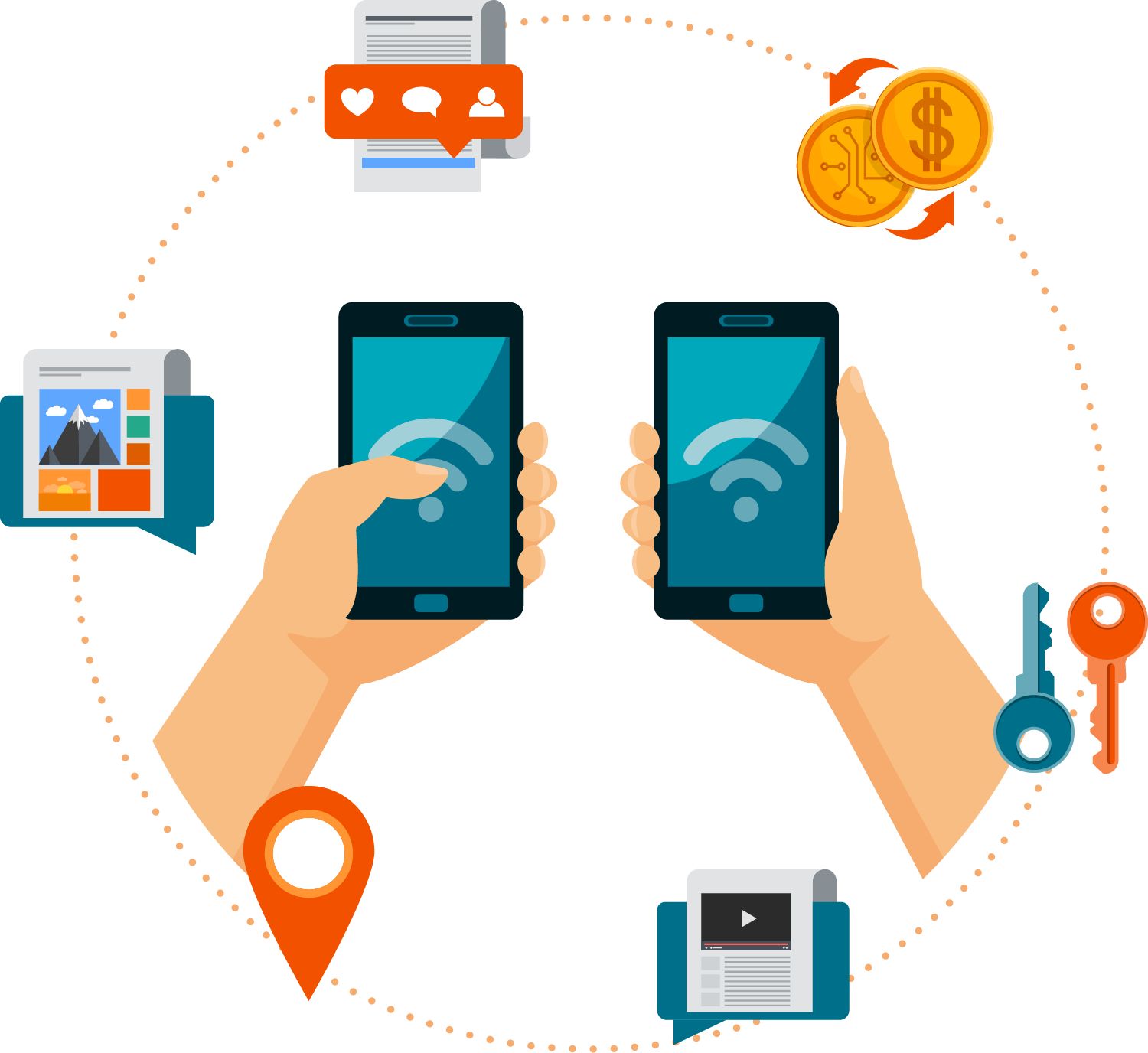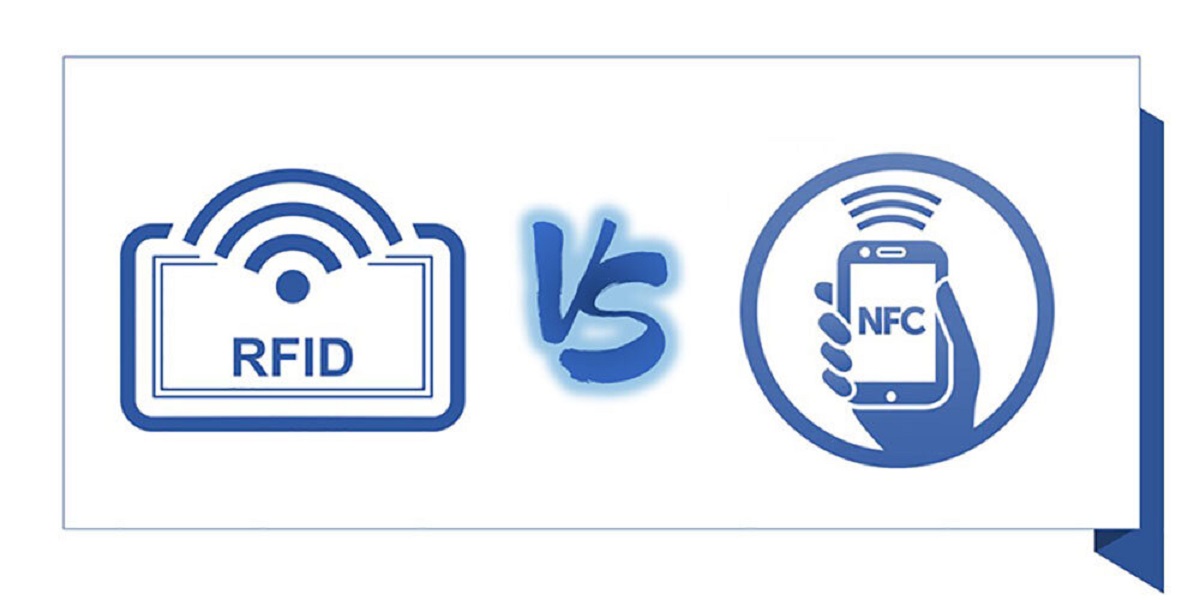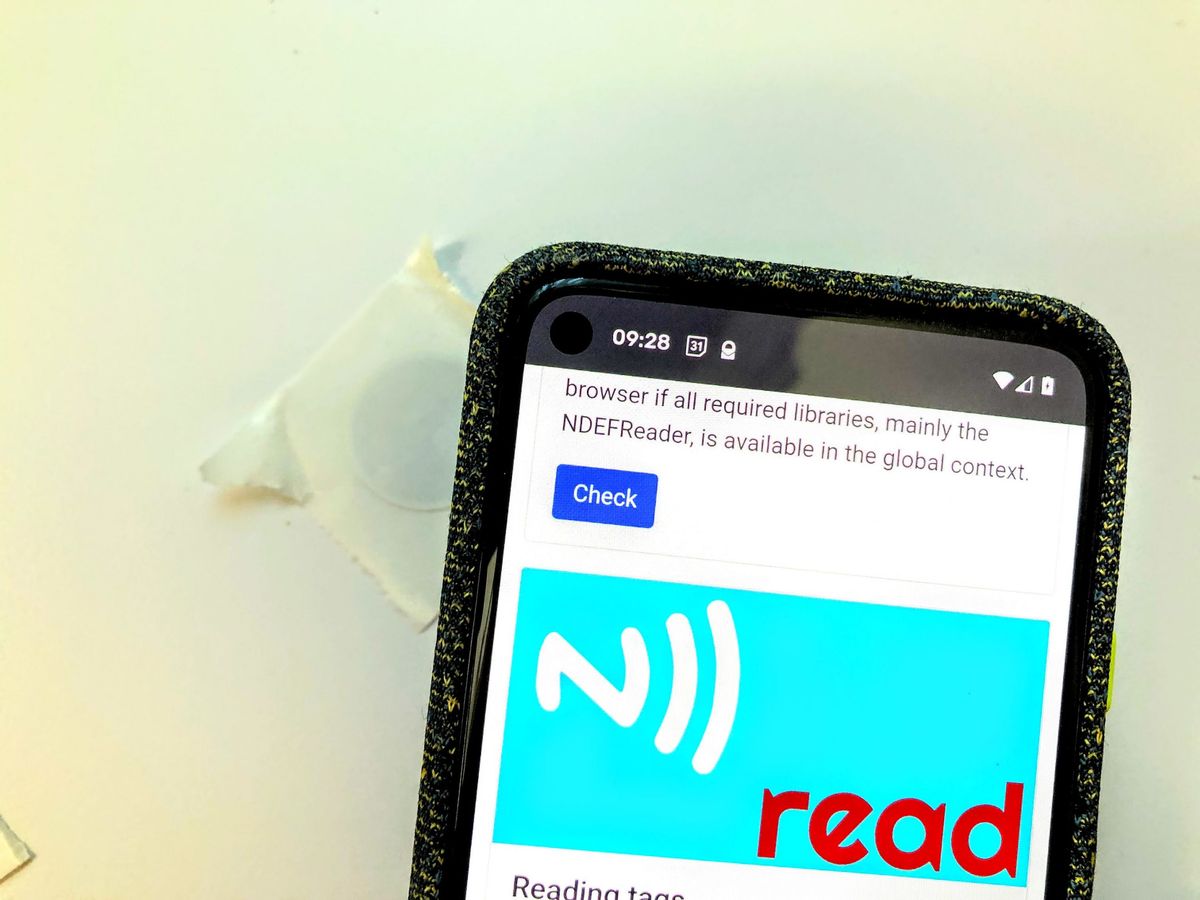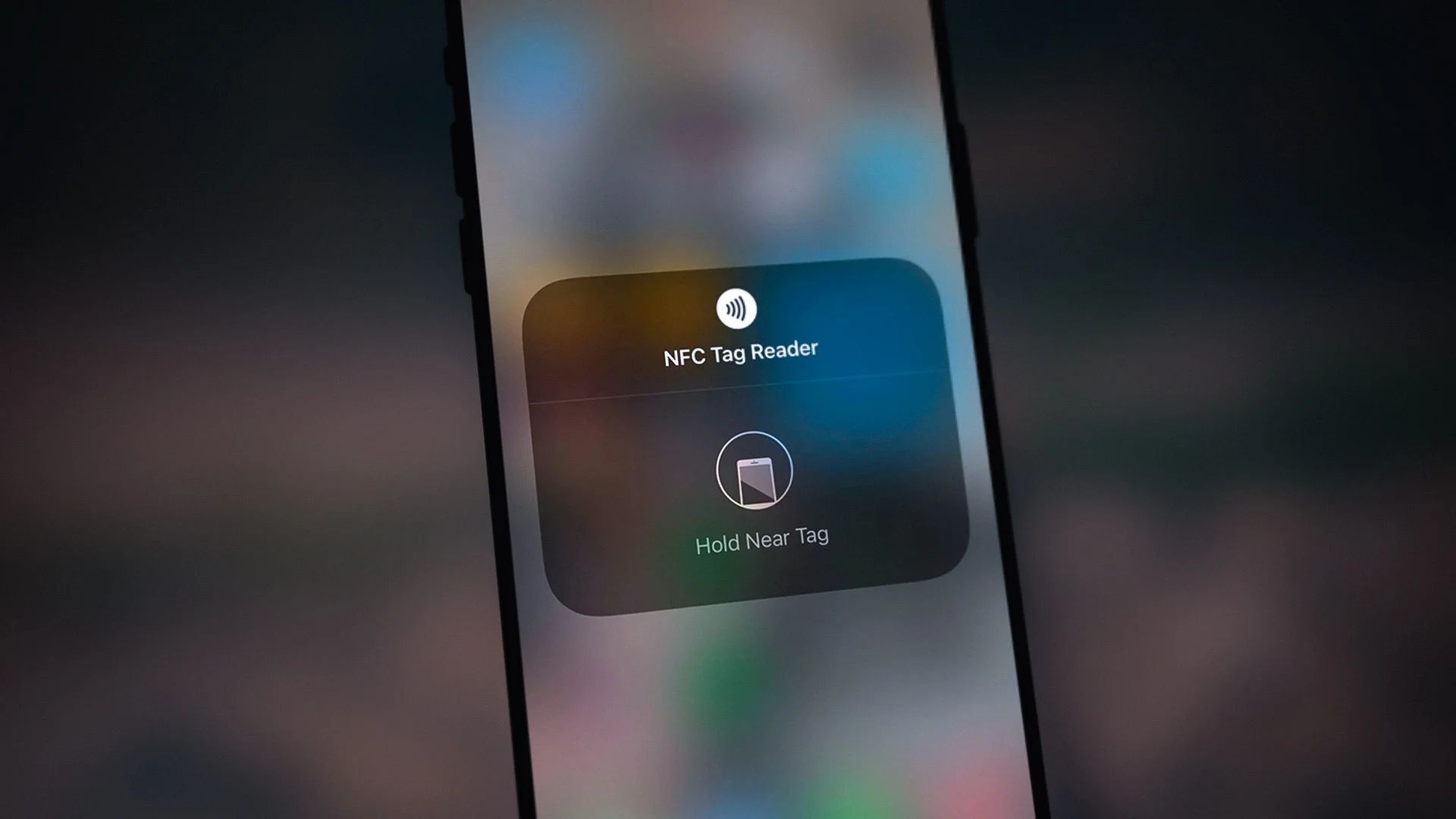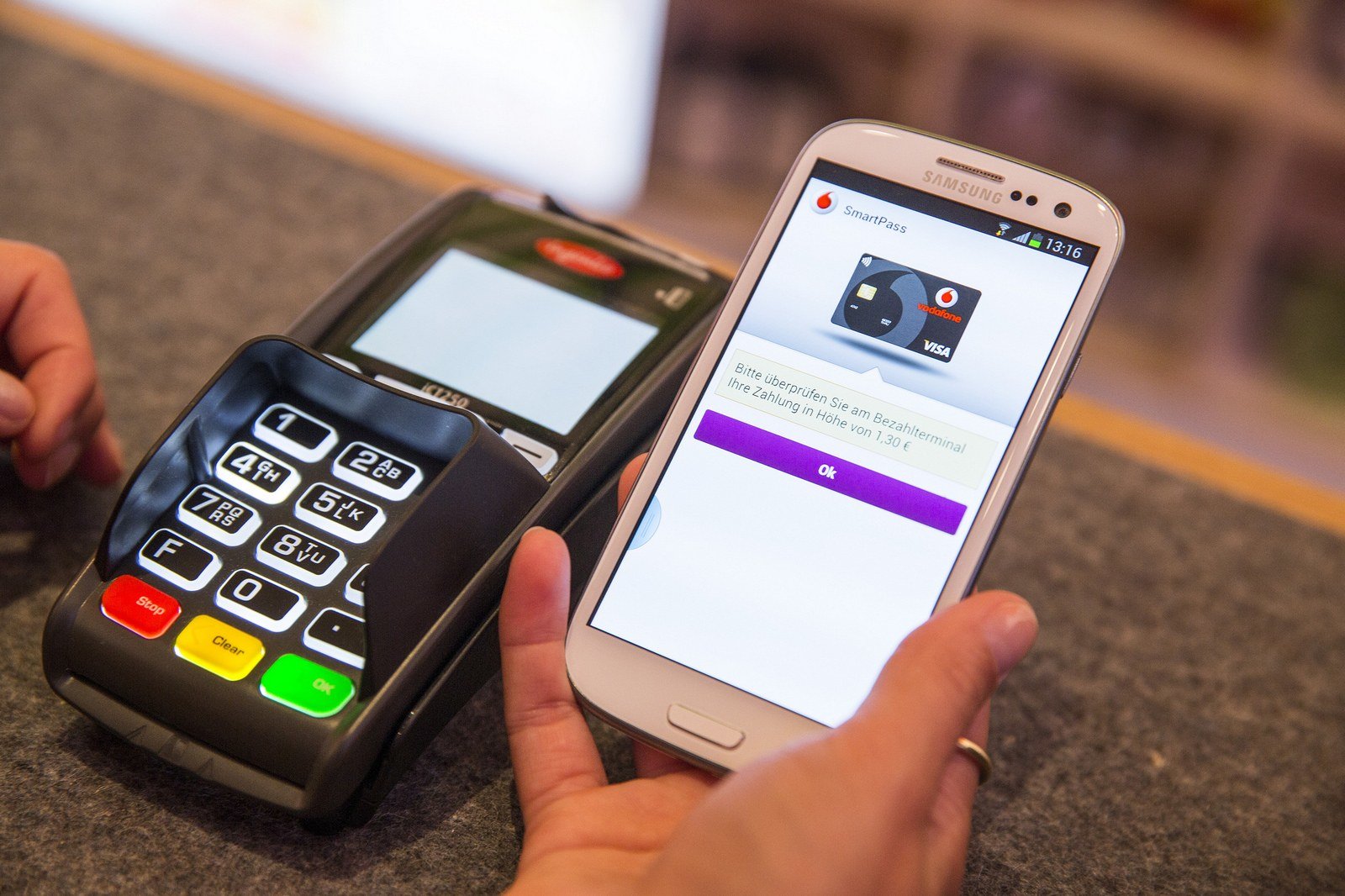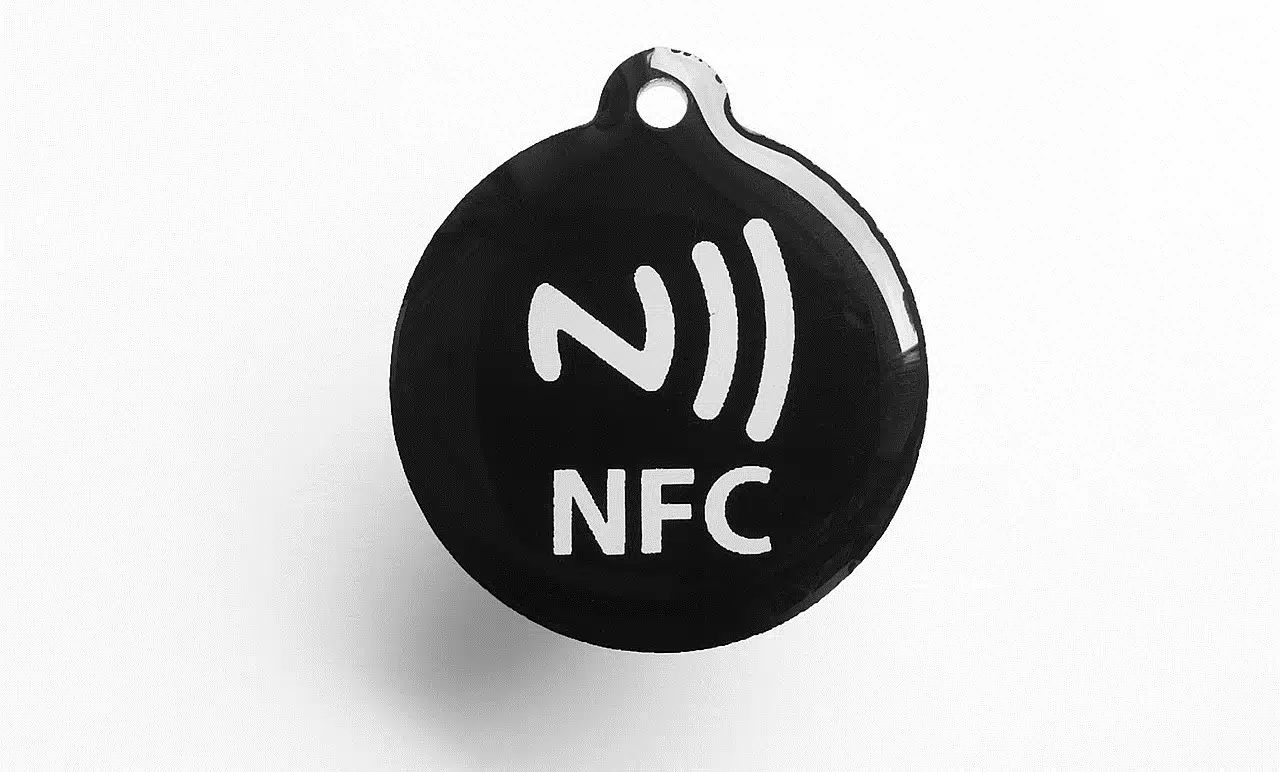Introduction
NFC (Near Field Communication) technology has revolutionized the way we connect and interact with devices. It has become a ubiquitous technology in our daily lives, from making payments with a simple tap of a smartphone to automatically unlocking doors with a wave of a keycard. But what exactly is NFC, and how does it work?
NFC technology is a short-range wireless communication technology that allows devices to exchange data over a distance of a few centimeters. It is based on RFID (Radio Frequency Identification) technology, but with a higher level of security and data transfer capabilities. NFC-enabled devices, such as smartphones, tablets, and even smart home devices, are equipped with an NFC chip that enables them to communicate with other NFC-enabled devices or NFC tags.
The beauty of NFC technology lies in its simplicity and convenience. Unlike Bluetooth or Wi-Fi, NFC does not require any complex setup or pairing process. It operates on a radio frequency of 13.56 MHz and enables devices to establish a connection by bringing them close together. This “tap and go” functionality has made NFC technology widely adopted and integrated into various industries and applications.
From mobile payments to access control systems, NFC has transformed the way we interact with technology. With a single tap or wave, NFC technology opens up a world of possibilities and seamless experiences.
In this article, we will delve into the details of NFC technology, exploring its functionalities, uses, benefits, and limitations. We will also take a closer look at how NFC technology is integrated into various devices and industries. By the end, you will have a comprehensive understanding of NFC technology and its impact on our daily lives.
What is NFC Technology?
NFC stands for Near Field Communication, which is a wireless technology that allows devices to communicate and exchange data over short distances. It operates on the principles of RFID (Radio Frequency Identification) technology but with a higher level of security and data transfer capabilities.
NFC technology enables two NFC-enabled devices, or an NFC device and an NFC tag, to establish a connection by simply bringing them close together, typically within a few centimeters. This proximity-based communication is what makes NFC technology so convenient and widely used in various applications.
At its core, NFC technology consists of three main components: the NFC chip, the antenna, and the NFC controller. The NFC chip is integrated into devices, such as smartphones, tablets, and even credit cards, enabling them to initiate or respond to NFC communication. The antenna is responsible for transmitting and receiving radio waves for communication, while the NFC controller manages the overall operation of the NFC system.
One of the unique features of NFC technology is its compatibility with existing contactless smart card technology, such as contactless payment cards or public transportation cards. This means that NFC-enabled devices can emulate these cards, allowing users to conveniently make payments or access services without the need for physical cards.
NFC technology operates at a frequency of 13.56 MHz, allowing for rapid and secure data transfer between devices. It supports a communication range of up to 10 centimeters, ensuring that the devices being used are in close proximity.
Overall, NFC technology provides a seamless and secure way to exchange information between devices. Its simplicity and convenience have led to its widespread adoption, particularly in applications such as mobile payments, access control systems, and smart home devices. The next section will delve into how NFC technology actually works.
How Does NFC Technology Work?
NFC technology operates on the principles of electromagnetic induction to enable communication and data transfer between devices. It uses a combination of magnetic field induction and radio frequency communication to establish a connection quickly and securely.
When two NFC-enabled devices come into close proximity, their NFC antennas generate a magnetic field. This magnetic field induces a current in the receiver device’s antenna, initiating communication between the two devices. This process is known as magnetic field induction.
Once the communication is established, the devices can exchange data using one of two modes: active mode or passive mode. In active mode, both devices have their own power source and actively participate in the communication process. They take turns transmitting and receiving data, allowing for bidirectional communication.
In passive mode, one device acts as the initiator, often referred to as the reader or the active device, while the other device, known as the tag or the passive device, responds to the initiator’s requests. The tag does not require its power source and is activated by the magnetic field generated by the active device.
During the communication process, NFC devices use different communication protocols to transfer data. These protocols include NFC Data Exchange Format (NDEF), which defines a standard way to package and exchange data, and ISO/IEC 14443, which specifies the communication protocol for contactless smart cards.
NFC technology also incorporates a high level of security features. It supports data encryption and authentication protocols, ensuring that the data exchanged between devices remains secure and protected from unauthorized access.
In terms of speed, NFC technology provides fast and efficient data transfer. It can transfer data at a speed of up to 424 kbps, allowing for quick and seamless communication between devices.
It’s important to note that NFC technology requires close proximity between devices, typically within a range of a few centimeters. This short-range communication ensures that devices are in close physical contact, adding an extra layer of security and preventing unauthorized access or interference.
In the next section, we will compare NFC technology with RFID technology and explore their similarities and differences.
NFC vs RFID
While NFC (Near Field Communication) and RFID (Radio Frequency Identification) technologies are closely related, they serve different purposes and have distinct features. Let’s take a closer look at how NFC and RFID compare to each other.
Both NFC and RFID technologies operate on the principles of wireless communication and use radio frequency for data exchange. However, there are several key differences between the two.
Range: One of the main differences between NFC and RFID is their communication range. NFC technology has a limited range of a few centimeters, requiring the devices to be in close proximity for communication. This short-range communication adds an extra level of security and prevents unauthorized access. On the other hand, RFID has a longer communication range, which can extend up to several meters depending on the frequency used.
Mode of Operation: NFC operates in two modes: active and passive. In active mode, both devices have their power source and actively participate in communication. In passive mode, one device acts as the initiator, while the other device responds. RFID, on the other hand, can operate in passive, active, or battery-assisted modes, depending on the specific application requirements.
Use Cases: NFC technology is primarily used for short-range communication between devices, such as smartphones, tablets, and smart home devices. It is commonly used for mobile payments, access control systems, and file sharing. RFID, on the other hand, is used for a wide range of applications, including inventory management, supply chain management, tracking assets, and identification cards.
Data Transfer Speed: NFC technology provides faster data transfer compared to RFID. It can transfer data at a speed of up to 424 kbps, allowing for quick and efficient communication between devices. RFID, on the other hand, has a slower data transfer speed and is typically used for transmitting smaller amounts of data.
Security: NFC technology incorporates various security features to ensure the integrity and confidentiality of data exchange. It supports encryption and authentication protocols, making it a secure option for applications such as mobile payments. RFID, however, generally has less robust security features and is more commonly used for identification purposes rather than secure data transfer.
Compatibility: NFC technology is backward compatible with existing contactless smart card technology. This means that NFC-enabled devices can emulate contactless payment cards or public transportation cards. RFID, while not as widely compatible, is used in a variety of different frequencies, each with its own compatibility requirements.
In summary, NFC and RFID technologies have their unique characteristics and applications. NFC is ideal for short-range communication between devices, while RFID is more versatile and commonly used for a wider range of applications. Understanding the differences between these technologies is crucial for leveraging their capabilities effectively.
Uses of NFC Technology
NFC (Near Field Communication) technology has found its way into various industries and applications, offering seamless and convenient ways to interact with devices and exchange data. Let’s explore some of the common uses of NFC technology.
Mobile Payments: One of the most popular uses of NFC technology is for mobile payments. NFC-enabled smartphones can be used to make contactless payments at NFC-enabled point-of-sale terminals. With a simple tap, users can securely make purchases without the need for physical cards or cash.
Access Control Systems: NFC technology is widely used in access control systems for secure entry and authentication. NFC-enabled keycards or badges can be used to grant access to restricted areas or buildings. Employees can simply tap their cards on a reader to unlock doors or gain entry, eliminating the need for physical keys or keypads.
File Sharing and Data Transfer: NFC technology allows for easy and quick file sharing and data transfer between NFC-enabled devices. Users can transfer files, such as photos, videos, or documents, by simply tapping their devices together. This feature simplifies the process of sharing content between smartphones, tablets, or other compatible devices.
Smart Home Devices: NFC technology is integrated into many smart home devices, enabling users to control and interact with their devices effortlessly. For example, NFC tags can be placed near the entrance of a home, allowing users to tap their smartphones to activate or deactivate certain settings, such as turning off lights or adjusting the thermostat.
Public Transportations: NFC technology has also been adopted in various public transportation systems. Commuters can use NFC-enabled cards or mobile devices to pay for fares or access public transportation systems. The convenience of tapping a card or phone makes for quick and easy boarding.
Event Ticketing: NFC technology has revolutionized the ticketing industry, making it easier and more secure to attend events. NFC-enabled tickets can be used for entry, with a simple tap of the ticket against a reader. This technology allows for faster and smoother entry into events, reducing the need for physical tickets or paper documents.
Healthcare: NFC technology has made its way into the healthcare industry, offering benefits such as patient identification and secure data transfer. NFC-enabled wristbands or tags can be used to identify patients, track medical records, and monitor medication administration, improving efficiency and patient safety.
Marketing and Advertising: NFC tags can be embedded in advertisements or products, enabling consumers to access additional information or promotions with a simple tap of their devices. This provides a more engaging and interactive experience for consumers and allows businesses to deliver targeted content or offers.
These are just some of the many uses of NFC technology across various industries. As the technology continues to advance, new and innovative applications of NFC will continue to emerge, enhancing our daily lives and transforming the way we interact with devices and information.
Benefits of NFC Technology
NFC (Near Field Communication) technology offers a range of benefits that have contributed to its widespread adoption and integration into various industries. Let’s explore some of the key advantages of NFC technology.
Convenience: NFC technology provides a seamless and effortless way to interact with devices. With a simple tap or wave, users can perform tasks such as making payments, sharing files, or accessing information. The convenience of NFC technology eliminates the need for physical cards, passwords, or complex setup procedures.
Fast Data Transfer: NFC technology enables fast data transfer between devices. With transfer speeds of up to 424 kbps, NFC allows for quick and efficient communication, making tasks such as file sharing or data exchange incredibly fast and convenient.
Security: NFC technology incorporates a high level of security features. It supports encryption and authentication protocols, ensuring that data exchanged between devices remains secure and protected from unauthorized access. NFC’s short-range communication limits the risk of interception, adding an extra layer of security.
Compatibility: NFC technology is backward compatible with existing contactless smart card technology. This means that NFC-enabled devices can emulate contactless payment cards or public transportation cards, allowing for seamless integration with existing systems without requiring significant changes.
Integration with Mobile Devices: NFC technology is integrated into many mobile devices, including smartphones and tablets. This widespread adoption of NFC in mobile devices has opened up a whole range of applications, from mobile payments to smart home control. The integration of NFC into mobile devices allows users to harness the power of NFC technology without the need for additional hardware.
Versatility: NFC technology offers versatility in its application. It can be used for various purposes, including mobile payments, access control, file sharing, ticketing, and more. This versatility makes NFC technology adaptable to a wide range of industries, from retail and transportation to healthcare and entertainment.
Cost-Effective: NFC technology is relatively cost-effective to implement. Since NFC operates on a low-power radio frequency, it does not require significant hardware or infrastructure changes. This makes it a viable and cost-effective option for businesses and organizations looking to leverage the benefits of NFC technology.
Enhanced User Experience: NFC technology enhances the overall user experience by providing a seamless and intuitive way to interact with devices and access services. Whether it’s making a quick payment or tapping a device to unlock a door, NFC technology simplifies tasks and delivers a seamless user experience.
The benefits of NFC technology have contributed to its success and adoption in various industries. As technology continues to advance, we can expect to see even more innovative applications and advantages of NFC technology emerging in the future.
Limitations of NFC Technology
While NFC (Near Field Communication) technology offers many advantages, it also has some limitations that should be taken into consideration. Understanding these limitations is crucial for effectively implementing and utilizing NFC technology. Let’s explore some of the key limitations of NFC technology.
Short Range: One of the primary limitations of NFC technology is its short communication range. NFC devices need to be within a few centimeters of each other to establish a connection. This limitation can be a challenge in certain scenarios where longer-range communication is required.
Dependency on Proximity: NFC technology relies heavily on proximity for communication. This means that devices need to be in close physical contact for the NFC connection to work efficiently. Any physical barriers or interference between devices can hinder the effectiveness of NFC communication.
Data Transfer Speed: Although NFC offers fast data transfer compared to other wireless technologies, such as Bluetooth, its maximum transfer speed of 424 kbps is relatively slower when compared to technologies like Wi-Fi or Ethernet. This limitation can be a factor when large files or high bandwidth requirements are involved.
Lack of Universal Compatibility: While NFC is widely adopted, it is not universally compatible across all devices and systems. Some older devices or systems may not have NFC capabilities or may use a different communication standard, making NFC communication impossible or challenging.
Limited Memory Capacity: NFC tags, which are commonly used for sharing information or initiating actions, have limited memory capacity. This limitation restricts the amount of data that can be stored or transferred using NFC tags. Complex applications or data-intensive tasks may require alternative solutions.
Power Consumption: NFC technology consumes power from the device’s battery to operate. While NFC has low power requirements, continuous usage of NFC functionalities can have a slight impact on the device’s overall battery life. This limitation should be considered, especially in battery-powered devices with limited power resources.
Interference and Security: While NFC technology provides security features, it is not immune to potential interference or security risks. Eavesdropping or tampering with NFC communication can still be possible, although the short-range nature of NFC communication makes it more difficult for attackers to intercept or access data without physical proximity.
Limited Range of Use Cases: While NFC has found applications in various industries, its use cases are mainly limited to short-range communication and data transfer. Although versatile in its applications, NFC technology may not be suitable for scenarios requiring longer distances, higher data transfer rates, or complex interactions.
Being aware of these limitations allows for better decision-making when considering the adoption and implementation of NFC technology. Despite these limitations, NFC remains a valuable technology that simplifies many daily tasks and offers convenient communication between devices.
NFC Technology in Mobile Devices
NFC (Near Field Communication) technology has become an integral part of many mobile devices, opening up a wide range of possibilities for users. Let’s explore how NFC technology is implemented in mobile devices and its various applications.
Modern smartphones and tablets are equipped with NFC chips that enable communication and data exchange with other NFC-enabled devices or NFC tags. These NFC chips, combined with the device’s antenna and NFC controller, allow users to harness the power of NFC technology conveniently.
One of the most common applications of NFC technology in mobile devices is mobile payments. With NFC-enabled mobile wallets, users can securely make payments by simply tapping their devices against NFC-enabled point-of-sale terminals. This technology, known as NFC mobile payments or mobile wallets, eliminates the need for physical credit cards or cash.
NFC technology also facilitates quick and easy file sharing between mobile devices. Users can share files, such as photos, videos, or documents, by simply tapping their devices together. This feature is useful for sharing content between smartphones, tablets, or even between a mobile device and a computer equipped with NFC capabilities.
In addition to mobile payments and file sharing, NFC technology is extensively used in mobile ticketing. By storing tickets, such as concert tickets or airline boarding passes, in an NFC-enabled mobile device, users can simply tap their devices to gain entry or access services. NFC-based mobile ticketing offers convenience, reduces paper waste, and streamlines the ticketing process.
NFC technology also enables mobile devices to interact with NFC-enabled accessories or smart home devices. For example, users can tap their smartphones to connect to NFC-enabled speakers or headphones for seamless audio pairing. NFC tags can be used to trigger specific actions or settings on the mobile device, such as automatically launching a specific app or adjusting device settings when the device comes into contact with the tag.
Furthermore, NFC technology in mobile devices finds applications in loyalty programs and marketing campaigns. NFC-enabled loyalty cards or marketing materials, such as posters or brochures, can be tapped with a mobile device to access discounts, promotions, or additional information. This offers a more interactive and engaging user experience while simplifying the redemption process.
It’s important to note that not all mobile devices have NFC capabilities. However, the increasing popularity of NFC technology has led to its incorporation in a wide range of mobile devices, including smartphones and tablets across different price ranges. NFC technology has become a standard feature for many flagship and mid-range smartphones, contributing to its widespread adoption.
With NFC technology in mobile devices, users enjoy the convenience, security, and versatility of NFC applications such as mobile payments, file sharing, ticketing, and interacting with accessories or smart home devices. As NFC technology continues to evolve, we can expect to see even more innovative applications in mobile devices, further enhancing the way we connect and interact with the world around us.
NFC Technology in Payments
NFC (Near Field Communication) technology has revolutionized the way we make payments, offering a convenient and secure method known as NFC mobile payments. Let’s explore how NFC technology is transforming the world of payments.
With the integration of NFC technology in smartphones and other mobile devices, users can now make payments by simply tapping their devices against NFC-enabled point-of-sale terminals. This contactless payment method eliminates the need for physical credit cards or cash, providing a seamless and efficient payment experience.
NFC mobile payments work by securely transmitting payment information between an NFC-enabled mobile device and the payment terminal. When initiating a payment, the NFC chip in the mobile device establishes a connection with the payment terminal by bringing the devices close together.
Once the connection is established, the mobile device securely transfers the payment information to the terminal using NFC communication protocols. This information typically includes the user’s credit or debit card details, which have been securely stored on the device or in a mobile wallet application.
Security is a crucial aspect of NFC mobile payments. NFC technology incorporates encryption and authentication protocols to ensure that payment data remains confidential and protected from unauthorized access or interception. This level of security, along with the close proximity required for NFC communication, makes it difficult for attackers to intercept or access payment information.
NFC mobile payments offer an added layer of security compared to traditional payment methods. Unlike magnetic stripe cards, which can be easily cloned or skimmed, NFC mobile payments use dynamic encrypted data for each transaction. This means that even if a transaction is intercepted, the information cannot be used to replicate a payment.
Furthermore, NFC mobile payment applications often require additional security measures, such as biometric authentication (e.g., fingerprint or face recognition) or PIN verification, to further enhance the security of transactions. These authentication methods provide an additional level of protection in case the mobile device falls into the wrong hands.
Besides the security benefits, NFC mobile payments also offer the advantage of convenience. Users can leave their physical wallets at home and make quick and efficient payments using their mobile devices. With just a tap, payments can be made in seconds, reducing wait times at checkout counters and enhancing the overall shopping experience.
NFC technology is widely supported by major payment card networks and financial institutions, making it compatible with a large number of payment terminals worldwide. This wide acceptance of NFC mobile payments has contributed to its growing popularity and availability across numerous retail locations, from supermarkets and restaurants to convenience stores and public transportation systems.
The future of NFC technology in payments looks promising, with advancements like tokenization and increased integration with digital wallets. As more users adopt NFC mobile payments and more merchants embrace the technology, the convenience and security offered by NFC technology will continue to transform the way we make payments.
NFC Technology in Access Control
NFC (Near Field Communication) technology has revolutionized access control systems, providing a secure and convenient method for granting access to restricted areas. Let’s explore how NFC technology is transforming access control.
Traditionally, access control systems relied on physical keys, access cards, or PINs for authentication and entry into secure areas. However, with the integration of NFC technology, access control systems have become more efficient, reliable, and user-friendly.
NFC-enabled access control systems utilize NFC technology to establish a secure and seamless connection between the user’s credentials and the access control devices. NFC-enabled keycards, wristbands, or mobile devices can be used to authenticate and grant access by simply tapping or waving them near the access control reader.
One of the key advantages of NFC technology in access control is its convenience. Users no longer need to search for or insert physical keys, swipe access cards, or remember complex PIN codes. A simple tap or wave of an NFC-enabled device is enough to gain entry, saving time and effort for both users and security personnel.
NFC technology also enhances the security of access control systems. NFC-enabled credentials, such as keycards or mobile devices, can be embedded with encryption and authentication protocols, making them much more difficult to clone or counterfeit compared to traditional access cards. Additionally, the short-range communication of NFC technology ensures that the user and device are in close physical proximity, minimizing the risk of unauthorized entry through stolen or lost credentials.
Furthermore, NFC technology allows for easy and quick updates to access rights and permissions. Administrators can remotely update access credentials for individuals or groups, eliminating the need for physical reissuance of access cards or keys. This flexibility and ease of administration make NFC-enabled access control systems highly scalable and adaptable to changing security requirements.
Another advantage of NFC technology in access control is its compatibility with other NFC-enabled devices or functionalities. For example, NFC-enabled mobile devices can be used for access control, eliminating the need for separate physical access cards. This integration of multiple functionalities into a single device simplifies the user experience and reduces the number of items that users need to carry.
NFC technology in access control is not limited to physical entry points. It can also be used for secure authentication and access to digital resources, such as computer systems, networks, or online services. By integrating NFC technology into digital access control systems, organizations can ensure secure and seamless access to digital assets.
Overall, NFC technology has transformed access control systems by offering convenience, enhanced security, and scalability. As the technology continues to evolve, we can expect to see more innovations and applications of NFC in access control systems, making them even more efficient and user-centric.
NFC Technology in Smart Home Devices
NFC (Near Field Communication) technology has become a valuable component in the development of smart home devices, adding convenience, connectivity, and control to our living spaces. Let’s explore how NFC is transforming the landscape of smart home technology.
Smart home devices are designed to automate and enhance various aspects of our homes, from lighting and temperature control to security and entertainment. NFC technology plays a vital role in simplifying interactions and enabling seamless connectivity between these devices and our smartphones or tablets.
NFC-enabled smart home devices, such as smart locks, thermostats, and speakers, allow users to incorporate NFC functionality into their daily routines. With a simple tap or wave of an NFC-enabled device, users can control and interact with their smart home devices effortlessly.
One of the prominent applications of NFC in smart homes is for controlling lighting and other connected devices. NFC-enabled light switches or tags placed near entrances or in specific rooms allow users to tap their smartphones to turn lights on or off, adjust brightness, or activate pre-configured lighting scenes.
NFC technology also grants homeowners the ability to personalize their smart home experience. NFC tags can be placed near specific devices or areas, such as a home theater system or a coffee maker, allowing users to tap their smartphones to trigger specific actions or settings. This customization adds a level of convenience and automation to day-to-day activities.
Home security is another area where NFC technology is making its mark. NFC-enabled smart locks allow users to unlock doors with a simple tap of their smartphone or NFC-enabled keycard. This eliminates the need for physical keys and adds an extra layer of security. Additionally, NFC technology can be used to create personalized access profiles, granting temporary or limited access to guests or service providers.
In addition to control and security, NFC technology in smart home devices enables users to effortlessly connect and stream content to audio or video systems. With NFC-enabled speakers or televisions, users can tap their smartphones to establish a connection and stream music or videos without the need for complex setup or pairing processes.
Moreover, NFC technology facilitates the quick and easy setup of new smart home devices. By tapping an NFC-enabled device against a setup tag or sticker provided with the device, users can automatically transfer device-specific information or connect to the appropriate network. This “tap and connect” approach simplifies the initial installation and configuration process.
Interoperability is a key advantage of NFC technology in the context of smart home devices. NFC-enabled devices can communicate and exchange essential information with other NFC-enabled devices, even if they are from different manufacturers or operating on different protocols. This standardization fosters a more cohesive and seamless smart home ecosystem.
As the Internet of Things (IoT) continues to expand, NFC technology will play an increasingly important role in establishing connections and interactions between smart devices. With its convenience, customization, and compatibility, NFC technology enhances the overall smart home experience and paves the way for more advanced and interconnected homes of the future.
Conclusion
NFC (Near Field Communication) technology has revolutionized the way we connect, interact, and transact with devices. Its simplicity, convenience, and versatility make NFC a valuable communication and data transfer technology in various industries.
From mobile payments and access control systems to file sharing and smart home devices, NFC technology has found its place in our daily lives, offering seamless and secure interactions. With a simple tap or wave, users can make payments, gain access to restricted areas, share files, and control devices, among other applications.
NFC technology’s short communication range and dependency on proximity provide an extra layer of security, making it difficult for unauthorized access or interference. NFC also offers fast data transfer speeds, allowing for quick and efficient communication between devices.
While NFC technology has numerous benefits, such as convenience, compatibility, and enhanced user experiences, it does have limitations. Its short communication range, limited memory capacity, and dependency on proximity present certain challenges in specific scenarios.
Nevertheless, NFC technology continues to evolve, and its applications are expanding rapidly. With widespread adoption in mobile devices, NFC is becoming a standard feature, ensuring its availability and compatibility across various devices and systems.
As technology advances, we can expect to see further innovations in NFC technology, such as improved security features, faster data transfer speeds, and increased integration with emerging technologies like the Internet of Things (IoT). The future of NFC holds promise for even greater connectivity and seamless interactions between devices.
In conclusion, NFC technology has transformed the way we connect and interact with devices, offering convenience, security, and efficiency. Its applications span across industries, enabling seamless mobile payments, access control, file sharing, smart home automation, and more. As NFC technology continues to evolve, it will undoubtedly play a significant role in shaping the future of technology and connectivity.







